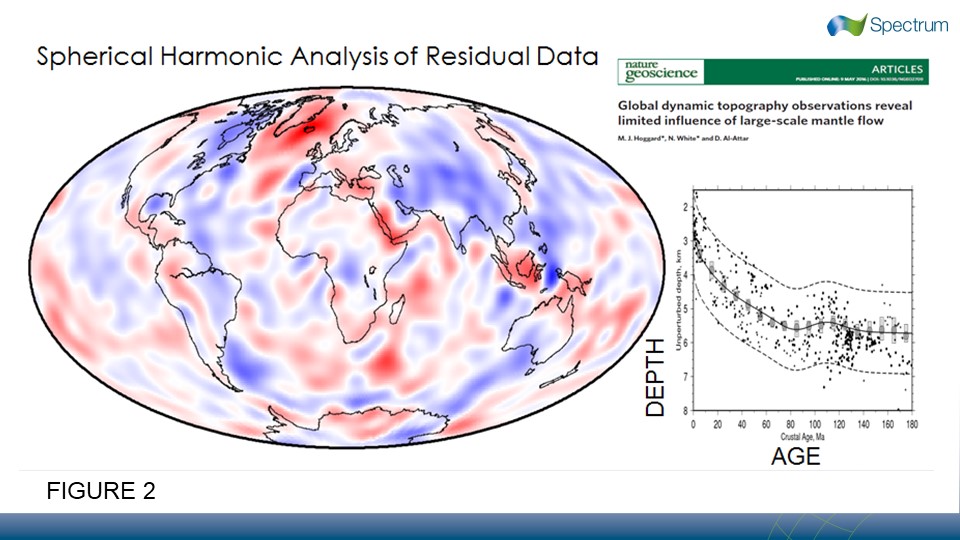12th February 2019
Abstract
Kindly sponsored by

Time travel is the most important accomplishment in the history of mankind, and we haven’t finished doing it yet.
Take a simple system; the formation of the Atlantic. A super-continent gets ripped neatly down the middle in two episodes some 80 million years apart, and the resulting chunks drift slowly away from each other. One might expect the basins along either margins to be rather similar. Yet the Atlantic margin basins are incredibly varied in terms of their architecture, stratigraphy and geologies, both between conjugate basin pairs across the Atlantic and surprisingly between adjacent basins along the passive margins.
So is this heterogeneity just “local geology”, or are we seeing the hand of a hidden or cryptic force at work on these passive margins controlling local geology as part of a bigger system? If we can reveal that can it tell us why these basins have developed the way they have, allowing us to explore them more effectively.
To investigate this question we provide an atlas of passive margins in the Atlantic, characterized by a number of observations including margin architecture, rift symmetry- asymmetries with conjugates, SDR formation, changes in shelf stability through time, sediment supply systems, salt basin deposition and halokinetic tectonics.

The characterized basins on the Atlantic margins are revealed to to be distinct and unique when compared to both adjacent basins and conjugate basins. Is this complexity derived from local geologic circumstances or local tectonic forces?
A discussion of the similarity between plate motion paths, shelf stability and the Hoggard et al (2016) model for small scale mantle convection cells was started by Hodgson and Rodriguez (2017, Part 1). We suggest that the divergent structural histories and stratigraphies in adjacent and conjugate basins such as those observed in the Atlantic passive margin atlas can be understood within a context of a global, predictable model – a template provided by underlying upper mantle convection patterns.

These convection cells are observed as being small in scale (ca 1000km diameter) and can be measured today by observing the difference between a theoretical depth to oceanic crust of a given age and actual depth measurements adjusted for sediment loading and crust thickness derived from seismic data. Such variations from the theoretical curve are referred to as “Dynamic Topography Residuals”. As continents drift they move over this fabric which influences individual shelf-basin relief, causing dramatic changes in slope which may cause catastrophic slope failure, or at other times, a stabilizing influence. Either way the notion of being able to identify a global sea level pattern from coast onlap is challenged. The underlying convection cells may also provide variable heat to the basin effecting thermal maturity.
What is not known for the mantle convection systems is their longevity and stability, however, this can be deduced from the seismic stratigraphies of passive margin basins as they moved and interacted with convection cells. This interaction can be traced through time from pre-rift through to drift via the passage of continental margins over the mantle residual fabric.
This analysis is supplying a new set of data to allow us to understand the processes that control passive margin formation. We can use the language of gravity written into shelf stability, convolved with a concept for SDR formation and asymmetric basin formation to understand the “magmacity” and abruptness of continental margins. The interaction with underlying mantle convection cells, allows us to infer palaeo-convection cells from earliest rifting to present day. In this way the apparent chaotic diversity of the atlas of basin character, can be expressed in terms of an atlas of dynamic topography and rift processes through time revealing a larger, simple picture of the earth. Indeed the mantle driving forces behind crustal architecture in this context gives a way in towards the next holy grail of basin modelling – the prediction of paleo heat flow in the parts of the passive margins not yet explored: the deep slope and basin floor.
Searching for treasure in ancient stone temples built by the gods of catastrophe is the daily occupation for scores of geo-time travellers around the globe. Whether mining for gems of clarity on workstation or outcrop, or surfing rogue waves across colossal data seas – geologists are poking into the skull and cobweb encrusted chambers of the globes history with a common aim – to understand the past and predict the future. This new mapping of mantle derived dynamic topography allows us to put a “why are the source, and reservoirs of a basin just so when it is adjacent to a basin with a very different history” into imaginings of the past, and a “where will the oil be found” into visions of the future.
Hoggard, Mark & White, N & Al-Attar, D. (2016). Global dynamic topography observations reveal limited influence of large-scale mantle flow. Nature Geoscience. 9. 10.1038/ngeo2709.
Hodgson, N. and Rodriguez, K. [2017]. Shelf Stability and Mantle Convection on Africa’s Passive Margins (part 1).
First Break, 35 (03), 93-97.
Hodgson, N. and Rodriguez, K. [2017]. Towards the global tectonic model: A new hope (part 2).
First Break, 36 (02), 77-80.
Video
Venue Information
Venue information
Venue name:
The Geological Society, London
Venue phone:
+44 (0)20 7434 9944

